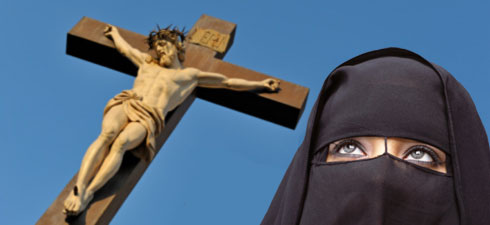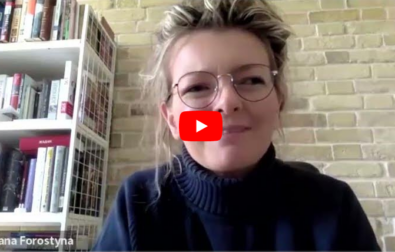Just for the sake of argument: if Jesus were wearing a burqa, could he still be hung up on the walls of classrooms and public offices? The debate about the full-body veil is flaring up this year in all sorts of different places. It began with Belgian and French bills, now passed into law, to ban the burqa and niqab in the public domain, followed by similar proposals in Spain and Britain. The news that Syria now prohibits the wearing of face-veils at university fits and yet doesn’t fit into the picture: one has to distinguish between the arguments that apply to the Arab world and those of the European debate.
Here in Europe, the discussion of the burqa ban invariably and automatically revolves around the Islamic challenge to Christian culture, where a double standard is often applied. Proposals to outlaw full-body veils do not meet with a storm of enthusiasm, to be sure, but with comprehension. After all, that much-mooted “mobile prison”, which is not required in such radical form by the Koran, is less the expression of a religious obligation than a horrible tool of patriarchal control, in which women are degraded to insects, as one woman journalist puts it. To Western sensibilities, the burqa seems like a Kafkaesque metamorphosis.
The Cross is a nifty symbol
But the morbid charm of the Christian cross, in comparison, isn’t all that harmless either. What does it really mean for a civilisation to venerate an instrument of torture as its emblem? Viewed with sufficient detachment, the exhibitionistic fetishism of suffering in the pictorial tradition of Western Christianity has got to look just as outlandish as the absurd mandatory veiling of women in some Islamic countries. If we hadn’t got so very used to them, all those crucified bodies dangling about in some areas of the Western world, writhing in agony and replete with painted blood-trickling wounds, could well be regarded as a form of indecent exposure.
The cross, with or without Jesus, is a nifty symbol: it shows death and simultaneously signifies the triumph over death. This instrument of torture is supposed to be a sign of hope, of course, because the crucified Christ was resurrected. But that’s tricky because it’s doubtful whether pictures can really express the opposite of what they show.
Naked Jesus versus muffled-up woman
It is understandable that Western culture should summon up more tolerance towards its own symbols than towards those of its southeastern neighbours. Nonetheless, it should be clear that its symbols are no more innocuous and no less cruel. The West shouldn’t go overboard in its outrage at Islamic misogyny either: after all, it still puts up with the occupational ban on women priests in one of its main churches, and many a nun’s habit is not such a far cry from the burqa.
In the clash over permissible symbols – naked Jesus versus muffled-up woman – Christianity’s explicit pictorial tradition comes up against Islam’s traditional ban on images. That the West should find the veil so sinister and inhumane is partly owing to its culture of exhibition, which equates freedom with disclosure, whether it be the disclosure of sins, of the body, or of images of God. Islam, however, like Judaism, expresses itself not in images, but in the observance of laws.
Need to ponder our own cultural biases
In affective terms, imposing a radical ban on the burqa in the public domain, but no such ban on the cross, replicates an old cultural struggle over faith, law and the commandment “Thou shalt not make thee any graven image” – which Christian culture never observed anyway. The Belgian and French burqa ban ends up looking like an attempt to ban the ban on images. Why do that, what is there to be so afraid of? In debating the burqa, we need to ponder our own cultural biases and cruelties as well, especially in Europe. That doesn’t mean to make light of the full-body veil. It is an instrument of oppression. But should it therefore be prohibited by the state?
A strictly secular purge of the public domain will create areas of freedom, but at the same time it impoverishes and imposes a form of secularistic paternalism on society. It might be better to take a more even-handed stance, as in the German constitution, for instance, which combines the principle of the neutrality of the state with the protection of the free practice of religion. That leads to a not entirely clear-cut separation of church and state, true enough, but it reflects the complexity of the whole issue of religion and tolerates not only the cross, but also the headscarf/burqa. The principle of “neutrality through plurality” puts its faith in enlightened citizens and their creative resilience. We needn’t expect more than that for Europe.
Was this article useful? If so we are delighted!
It is freely available because we believe that the right to free and independent information is essential for democracy. But this right is not guaranteed forever, and independence comes at a cost. We need your support in order to continue publishing independent, multilingual news for all Europeans.
Discover our subscription offers and their exclusive benefits and become a member of our community now!












